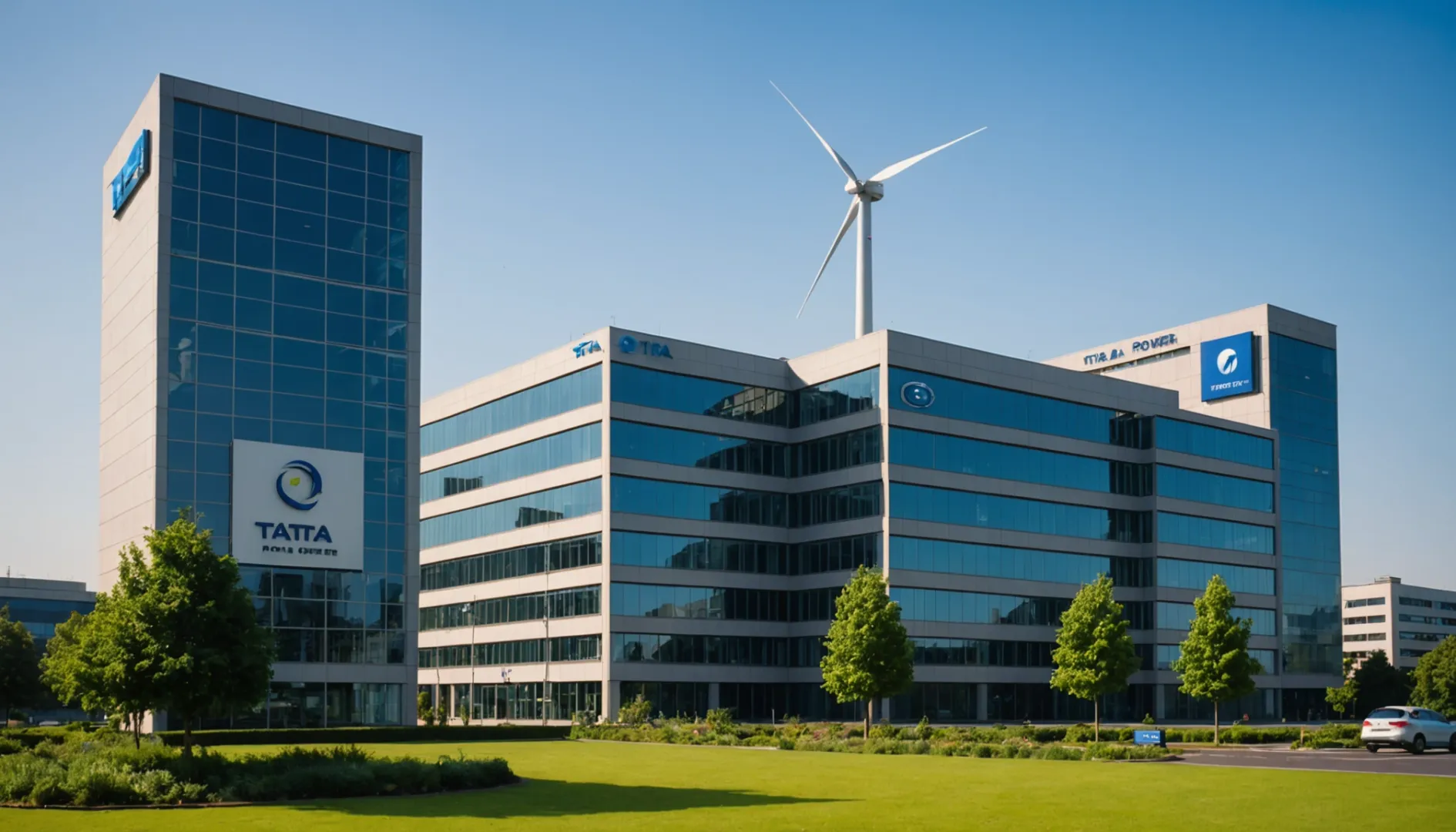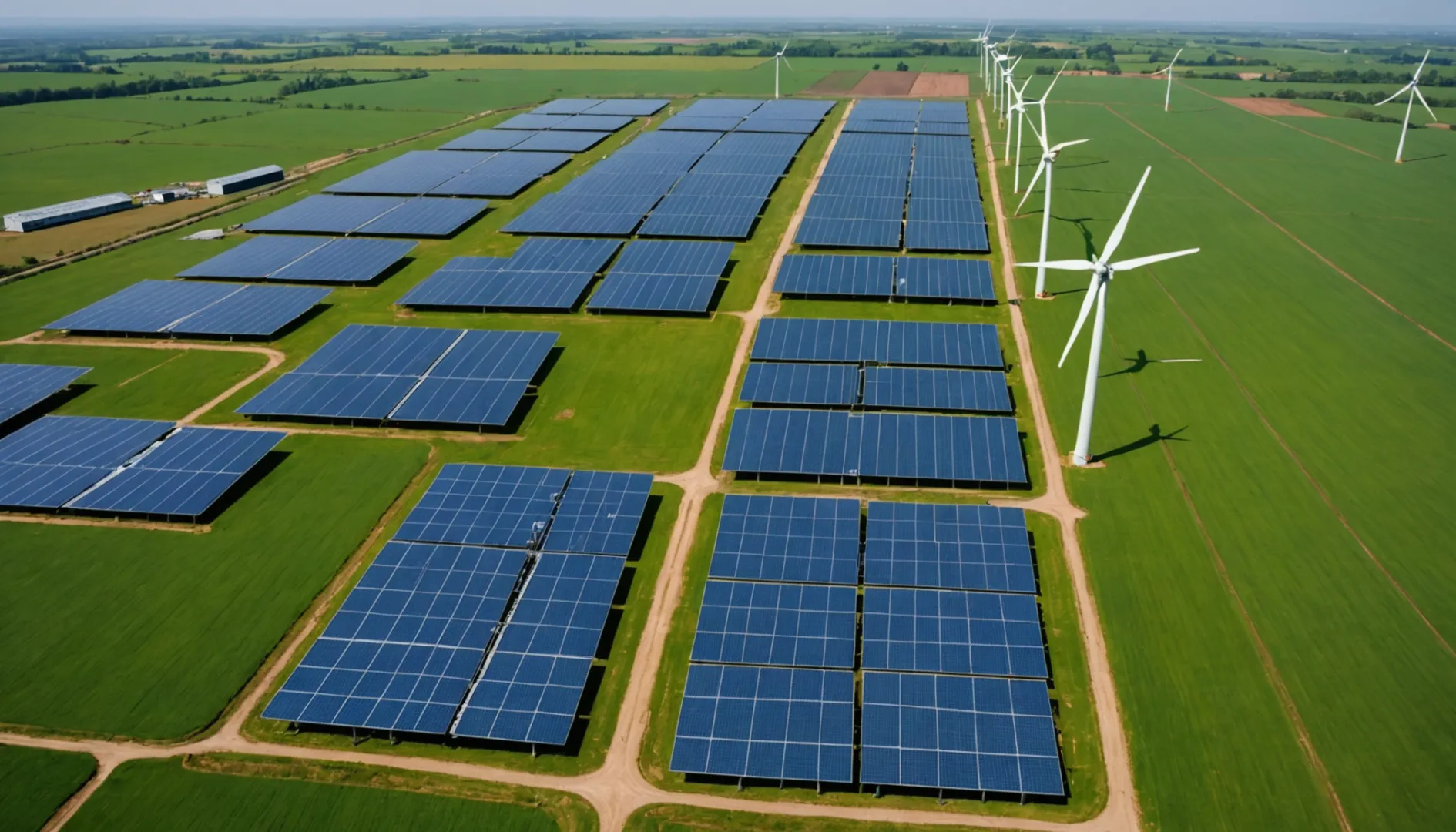Have you ever found yourself questioning why some stocks seem to soar while others stagnate? Tata Power's price tag has stirred quite a conversation, and I'm here to explore whether it's genuinely high or a golden opportunity.
Tata Power's price is considered expensive due to its substantial investments in renewable energy, strategic market positioning, and operational challenges. These factors contribute to higher costs, influencing the company's pricing strategy and perceived value.
But before jumping to conclusions, let's take a deeper dive into what really drives Tata Power's pricing. This journey will unravel the company's market strategies and its unique position in the sector.
Tata Power's stock price is high due to renewable investments.True
Investments in renewable energy increase costs, impacting stock price.
What Role Do Renewable Investments Play in Tata Power's Pricing?
Tata Power's ambitious renewable investments have significant implications on its pricing structure. How do these investments influence costs?
Tata Power's renewable energy investments drive up costs due to substantial capital expenditures and infrastructure development, impacting its pricing strategy.
Investing in the Future: Tata Power's Green Vision
Tata Power is actively expanding its renewable energy portfolio, aiming to transition from 41% to 70% renewable energy by 2030. This strategic shift involves significant capital investments in solar and wind energy projects. Such initiatives not only enhance sustainability but also require considerable financial resources, influencing the company's pricing strategy.
A notable investment includes the Rs 43 billion allocated for a solar cell production facility in Tamil Nadu. This facility is part of Tata Power's broader plan to enhance domestic production of solar components and improve efficiency through advanced technologies.
Financial Implications of Renewable Investments
The move towards a greener portfolio necessitates hefty upfront investments. These expenditures include:
- Infrastructure Development: Building state-of-the-art facilities and upgrading existing ones to accommodate renewable technologies.
- Research and Innovation: Investing in cutting-edge research to develop efficient renewable technologies and improve existing systems.
- Operational Costs: Managing higher operational costs as a result of new technology integration and scaling up renewable operations.
These financial commitments are often passed on to consumers through increased service charges, making Tata Power's pricing appear higher compared to peers who might not be investing as heavily in renewables.
Balancing Costs with Market Positioning
Despite the high costs, Tata Power's strategic investments strengthen its market positioning as a leader in sustainable energy. This positions the company advantageously in a market increasingly driven by green energy initiatives1 and regulatory pressures to reduce carbon footprints.
Moreover, the renewable energy sector2 is expected to see exponential growth, offering Tata Power a competitive edge and potential long-term profitability despite current pricing challenges.
Impact on Consumer Perception and Stock Performance
Investments in renewable energy also affect consumer perception and investor confidence. As consumers become more environmentally conscious, they might be willing to pay a premium for sustainable energy solutions, aligning with Tata Power's pricing strategy.
On the stock market front, Tata Power's focus on renewable energy has led to increased investor confidence, as reflected in the rising stock prices and favorable analyst ratings. This positive sentiment can further justify its pricing strategy as investors anticipate robust future growth in the green energy sector.
Tata Power aims for 70% renewable energy by 2030.True
Tata Power plans to increase its renewable energy share to 70%.
Renewable investments reduce Tata Power's pricing costs.False
Investments increase costs due to high capital expenditures.
How Does Tata Power Compare with Its Industry Peers?
Tata Power stands as a giant in India's energy sector, but how does it truly measure up against its industry peers?
Tata Power compares favorably with its industry peers due to its strong focus on renewable energy, strategic investments, and robust market positioning. These elements set it apart in a rapidly evolving energy landscape, making it a formidable player in the market.
Renewable Energy Initiatives: A Market Differentiator
In recent years, Tata Power has pivoted significantly towards renewable energy. This strategic shift is not just a response to global sustainability trends but also a competitive move to distinguish itself from its peers. While many energy companies are now investing in renewables, Tata Power's commitment—targeting a 70% renewable portfolio by 2030—is particularly aggressive.
This commitment is exemplified by their Rs 43 billion investment in solar cell production in Tamil Nadu. Such investments underscore the company’s dedication to leading in renewable technology and infrastructure, giving it a competitive edge over companies with lesser commitments.
Financial Performance and Investor Sentiment
Financially, Tata Power's stock has been buoyant, reflecting investor confidence driven by its renewable focus. A comparison with industry peers shows that while some competitors lag in stock performance, Tata Power has garnered positive attention from investors and analysts alike.
Below is a simplified comparison of Tata Power's stock performance against key competitors:
| Company | Renewable Energy Focus | Stock Growth (Last Year) |
|---|---|---|
| Tata Power | High | +35% |
| Competitor A | Moderate | +20% |
| Competitor B | Low | +15% |
This table highlights how Tata Power's market strategies have translated into superior investor returns compared to its peers.
Operational Challenges and Market Positioning
Despite its strengths, Tata Power faces operational challenges such as legal disputes over coal supplies. These issues could potentially affect its pricing strategy and operational efficiency. However, unlike some peers who face similar issues without a robust contingency plan, Tata Power's strategic pivot to renewables serves as a buffer against such operational risks.
Legal disputes and their impact on energy companies3 can be a significant financial burden. Yet, Tata Power’s diversified approach aids in mitigating these risks, setting it apart from more traditional energy firms.
Customer Perception and Service Innovation
Tata Power's EZ Charge service for electric vehicles is another area where it stands out. Despite being perceived as expensive due to tax structures on top-ups, the service's innovation aligns with consumer demand for sustainable energy solutions.
While its high service charges might deter some customers, the emphasis on quality and sustainability often attracts environmentally-conscious consumers willing to pay a premium for cleaner energy options.
Understanding consumer behavior in energy markets4 can offer insights into why Tata Power's pricing might appeal to a specific market segment.
Overall, when compared to industry peers, Tata Power's comprehensive approach to sustainability, backed by strategic financial and operational initiatives, positions it as a leader in the energy sector.
Tata Power aims for 70% renewables by 2030.True
Tata Power targets a 70% renewable energy portfolio by 2030.
Tata Power's stock grew 15% last year.False
Tata Power's stock grew by 35%, not 15%, last year.
What Are Analysts Saying About Tata Power's Future Prospects?
With Tata Power's strategic pivot towards renewable energy, investors are keen to understand the company's future potential.
Analysts are optimistic about Tata Power's future, citing its robust investment in renewables and strong market positioning. They foresee continued growth driven by the company's strategic initiatives and expanding green energy portfolio, despite existing operational challenges.
Analyzing Market Sentiment
Tata Power's ambition to shift its energy mix from 41% to 70% renewables by 2030 has captured significant attention. Analysts believe this commitment positions the company as a leader in India's green energy transition, a sector with enormous growth potential. Financial experts have noted that such a bold initiative could yield substantial long-term returns, especially as global and local policies increasingly favor sustainable energy solutions.
Investment Strategies and Their Impacts
The company's recent Rs 43 billion investment in a solar cell production facility in Tamil Nadu exemplifies its strategic focus. Analysts highlight that by enhancing local production capabilities, Tata Power could reduce dependency on imports, potentially lowering costs over time. This move is seen as crucial for ensuring the supply chain stability essential for scaling renewable projects.
Stock Performance Insights
Tata Power's stock has performed well, reflecting investor confidence. Recent upgrades from financial analysts have increased target prices, indicating a positive outlook on future profitability. Analysts point out that the stock's performance is bolstered by the anticipated growth in the renewable sector and Tata Power's proactive steps to capture this emerging market.
Challenges and Considerations
However, analysts also caution about ongoing operational challenges such as legal disputes over coal supply agreements, which could impact financial performance. They recommend monitoring these developments closely, as resolutions or escalations could significantly influence the company's cost structures and market perception.
In conclusion, while there are challenges to navigate, analysts generally maintain an optimistic view on Tata Power's future5 given its strong renewable focus and strategic investments. For investors, keeping an eye on both the macro trends and specific company strategies will be key to understanding the trajectory of Tata Power in the coming years.
Tata Power aims for 70% renewables by 2030.True
Tata Power plans to increase its renewable energy mix to 70% by 2030.
Tata Power's Rs 43 billion solar investment is in Gujarat.False
The investment is actually in a solar cell facility in Tamil Nadu.
How Do Operational Challenges Impact Tata Power's Costs?
Operational challenges significantly impact Tata Power's cost structure, influencing their pricing strategy.
Operational challenges, such as legal disputes and coal supply issues, increase Tata Power's costs. These factors contribute to its pricing strategy and perceived expense.
Legal Disputes and Their Financial Strain
Tata Power has been involved in several legal disputes, particularly concerning coal supply agreements. These disputes not only incur legal fees but also disrupt supply chains, leading to increased operational costs. Legal battles can divert resources from other strategic initiatives, affecting cost efficiency6.
Coal Supply Challenges
Coal is a significant component of Tata Power's energy production. Disruptions in coal supply, whether due to legal disputes or logistical issues, can lead to shortages and increased procurement costs from alternative sources. This fluctuation in coal availability directly impacts operational costs, which may then be passed on to consumers.
Regulatory Compliance Costs
Operating within the energy sector requires strict adherence to regulatory standards. Compliance with environmental regulations, especially with Tata Power's shift towards renewable energy, involves significant financial outlay. Investments in technology to reduce emissions and meet regulatory standards can be substantial. This compliance is necessary but adds another layer of cost that affects pricing.
Impact of Market Volatility
Market volatility, including fluctuations in raw material prices and currency exchange rates, can unpredictably affect operational costs. Tata Power needs to hedge against these fluctuations, which often involves complex financial strategies that add to operational costs. Understanding how currency exchange7 impacts energy companies can provide insights into these cost structures.
Infrastructure and Technological Upgrades
To maintain a competitive edge, Tata Power continuously invests in upgrading its infrastructure and adopting new technologies. While these investments are crucial for long-term growth and sustainability, they also lead to short-term increases in operational expenses. These upgrades are essential for improving efficiency but contribute to the overall cost framework.
In conclusion, while operational challenges are multifaceted, their impact on Tata Power's costs is undeniable. Each challenge, from legal issues to technological upgrades, plays a critical role in shaping the company's pricing strategies.
Legal disputes increase Tata Power's costs.True
Legal fees and supply chain disruptions raise operational expenses.
Tata Power's coal supply is unaffected by market volatility.False
Fluctuations in coal availability impact costs and pricing.
Conclusion
Tata Power's pricing reflects its robust investments in renewables and market dynamics. As investors, understanding these elements can guide our decisions and strategies.
-
Explore how Tata Power leads in sustainable energy solutions.: At Tata Power, we believe that energy is the foundation of progress. We are committed to ensuring that our energy is greener, cleaner and, more sustainable. ↩
-
Understand the projected growth of the renewable energy sector.: The Energy Information Administration expects renewable deployment to grow by 17% to 42 GW in 2024 and account for almost a quarter of electricity generation. ↩
-
Explores how legal issues affect operational efficiency and pricing.: The energy transition presents both opportunities and challenges, and as businesses engage in meritorious disputes that arise in its wake, legal ... ↩
-
Delves into why some consumers prefer premium sustainable options.: The core of my research is to investigate the behaviors of consumers, firms, and governments in environ- mental and energy markets, and explore ... ↩
-
Discover expert insights into Tata Power's strategic growth and investment plans.: Future criteria checks 1/6 Tata Power is forecast to grow earnings and revenue by 15.8% and 9.6% per annum respectively. EPS is expected to grow by 17% per ... ↩
-
Understand how legal challenges increase operational costs in businesses.: The litigation is likely to have a negative impact on the balance sheet if appropriate funding or insurance is not secured. ↩
-
Learn how currency fluctuations affect energy companies' operational expenses.: There is a hidden string that ties currencies to crude oil. Price actions in one venue force a sympathetic or opposing reaction in the other. ↩









